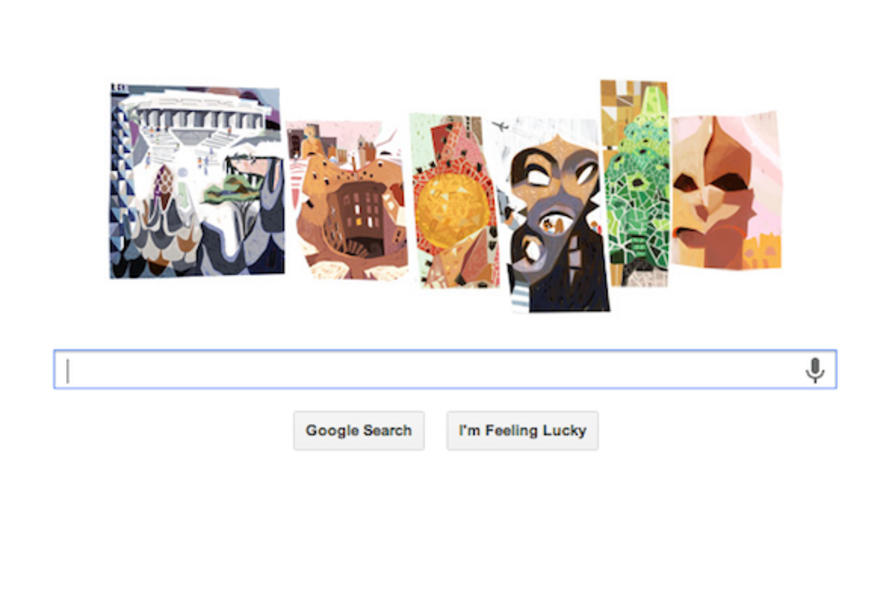Remembering Antoni Gaudí, groundbreaking architect and modernist
The Google homepage today depicts six stylized images of monumental Spanish architecture, including the Casa Batlló, in Barcelona, and the Casa Mila, in the Eixample district of the same city. The doodle is an homage to the great Catalan architect – and pioneering modernist – Antoni Gaudí, who was born on June 25, 1852, in Reus, Catalonia, exactly 161 years ago Tuesday.
It is hard to understate Gaudi's impact on the world of modern art. UNESCO, which has placed several of Gaudi's buildings on its World Heritage List, from the Casa Bellesguard to the Casa Batlló, describes his contributions as helping shape 19th and 20th century architecture and building technology:
Gaudí’s work exhibits an important interchange of values closely associated with the cultural and artistic currents of his time, as represented in el Modernisme of Catalonia. It anticipated and influenced many of the forms and techniques that were relevant to the development of modern construction in the 20th century.
Gaudí was apparently a relatively sickly child, but his convalescence, according to one online biography, allowed him to spend "many hours contemplating nature, drawing lessons that he was to apply later in his architecture." In the late 1860s, he moved to Barcelona, initially to study teaching, but by 1873, he was enrolled in architecture school.
Upon his graduation in 1878, Gaudí established his own architecture firm, and set about creating the works that would make his name. Perhaps his most famous early work is the Casa Vicens, a private residence in the Gràcia district of Barcelona. In the 1880s, he also completed work on the Güell Pavilions, which was named after Eusebi Güell, Gaudí's most steadfast patron.
But as the website of the Gaudí Experiència museum puts it, it was in 1890 that Gaudí began to perfect "his understanding of architectural space and the applied arts, giving his work unique and unsuspected qualities that stood out from the other Modernist architecture of his day. These were Gaudí's mature years in which a succession of master works appeared: Bellesguard Villa, Park Güell, the restoration of Mallorca Cathedral, the church of the Colònia Güell, Casa Batlló, La Pedrera, and the Nativity façade of the Sagrada Familia."
Gaudí received a commission to work on the Sagrada Familia in 1883, and the grand church, with its sharp, perforated steeples and mosaic-dappled facade, became a kind of fixation for Gaudí, who labored over the building for more than 40 long years.
Gaudí died on June 10, 1926, after being hit by a tram in Barcelona. Still, his legacy lives on, as does the Sagrada Familia, which remains unfinished even today, almost a century later. Earlier this year, in an interview with 60 Minutes, Gaudí's biographer Gijs van Hensbergen was asked to define the one thing that made Gaudí a great artist.
"The capacity to see space in a totally different way," Mr. van Hensbergen answered, "to make space explode, to see a building as a sculpture rather than just as a place to live in or a roof over your head. He's someone who reinvented the language of architecture which no other architect has ever managed to do."
For more tech news, follow us on Twitter @venturenaut.







